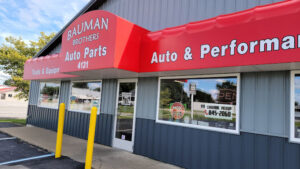There were large differences between the annual product sales of the different types of vehicles
Fort Wayne, Ind.—Aftermarket product sales climbed by more than $20 billion at user-price between 2017 and 2022, despite the historic aftermarket product decrease caused by COVID-19 in 2020.
“During these five years, there were large differences between the annual product sales of the different types of vehicles and the product growth that each generated,” according to the latest Lang Aftermarket iReport. “By 2022, aftermarket product volume was more concentrated among a few types of vehicles than five years earlier.”
During 2022, aftermarket product volume reached nearly $175 billion at user-price, the price paid by the ultimate consumers of products.
Here are the key takeaways from Lang’s analysis.
Product Sales by Type of Vehicle
Aftermarket product volume can be divided by four types of vehicles: domestic nameplate light vehicles, foreign nameplate light vehicles, heavy trucks, and all other use (off-road equipment, machinery, various types of power units, and miscellaneous product volume).
These categories use different kinds of products and generate different rates of product growth across the aftermarket.
Domestic Nameplates
Domestic nameplate cars and light trucks averaged nearly $57 billion in yearly product volume between 2017 and 2022. Despite generating just over one-third of 2022 aftermarket product sales at user-price, domestic nameplates suffered nearly a $3 billion product decline over these five years.
This pushed domestic nameplates into second place in 2022 sales, down from their aftermarket product lead of five years earlier.
Foreign Nameplates
Foreign nameplate cars and light trucks climbed more than $15 billion at user-price between 2017 and 2022, surpassing domestic nameplates for top product share. Foreign nameplates crested $59 billion in average annual sales between 2017 and 2022, as their product volume increased by over 30% at user-price.
Heavy Trucks
Heavy trucks (including medium-weight vehicles) were third in 2022 aftermarket product sales, recording a $5 billion gain over 2017. Heavy trucks averaged over $32 billion in yearly product sales between 2017 and 2022.
Heavy trucks posted the second-largest product gain during these five years, stronger than their third-place in product volume.
Other Product Use
The residual product category of “other use” includes off-road equipment, machinery, various types of power units, and the miscellaneous use of vehicle products. This category averaged over $15 billion in product volume between 2017 and 2022 and added more than $1.5 billion in sales. Nevertheless, its sales share declined slightly over those years.
Shifts in Product Growth Rates
Two types of vehicles bested the annual product growth rate of the overall aftermarket from 2017 to 2022. Foreign nameplate light vehicles averaged a 6.9% yearly product gain, nearly triple the 2.5% annual growth of the overall aftermarket.
Heavy trucks averaged a 3.3% annual product increase during these five years, nearly one-third above the market’s annual growth pace.
Share of Product Growth
Foreign nameplate light vehicles generated about 70% of total product expansion between 2017 and 2022, followed by heavy trucks, which accounted for almost one-quarter of aftermarket product growth. The residual category of other use represented about 7% of the $20 billion product gain between 2017 and 2022.
Together, foreign nameplate light vehicles and heavy vehicles accounted for 60% of 2022 aftermarket product sales at user-price, substantially greater than their combined market share five years earlier.
Aftermarket Impact
Changes in aftermarket product concentration by type of vehicle affect the aftermarket in three significant ways.
• The mix of vehicle products are altered, since each type of vehicle requires a different mix of aftermarket products, and their products are expanding at different annual rates.
• This changing volume and mix of aftermarket products affect the share of distribution channels supplying the aftermarket, since each channel differs in its mix of products by the major types of vehicles.
• The size of the DIFM and DIY markets and the sales of outlets where automotive products are sold and installed are also affected by the concentration of aftermarket volume by type of vehicle.









Comments are closed.